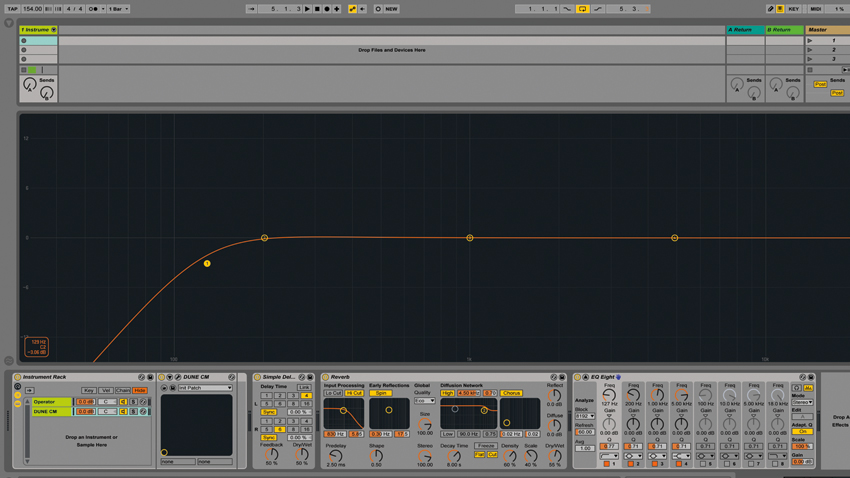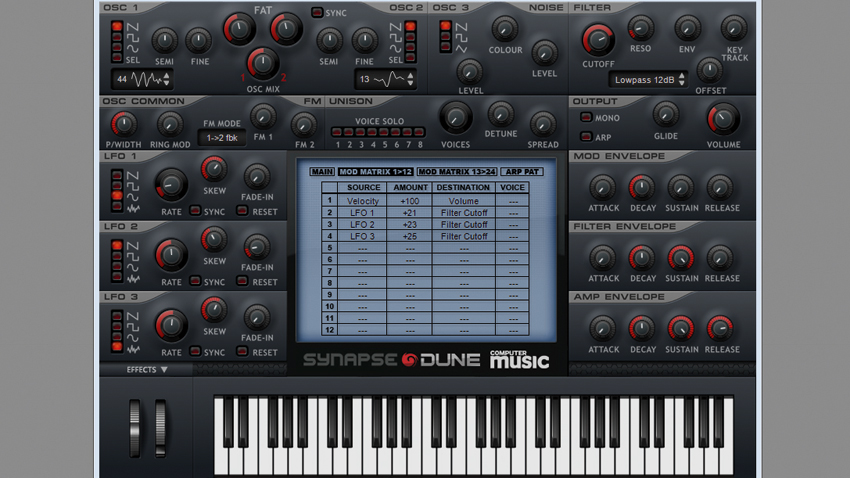12 blockbuster cinematic sound design tips
Switch off your mobile and finish your conversation, cos it's time for the main event - a dozen tricks for improving your movie-inspired productions!

Whether you're scoring an actual movie or just looking to bring a touch of epic Hollywood style to your music productions, these 12 quickfire techniques will provide you with plenty of creative ammunition.
For more cinematic sound design tutorials, pick up the May edition of Computer Music.

1. EQ to leave space
The bigger the sound, the more room it takes up in the mix! While those expansive pads sound great on their own, they can chew up a lot of mix real estate. Excessive low end can be removed with a high-pass filter.
2. Adding samples
Add clarity and character by layering foley with your synth. Fire up a sampler device and add a clean-sounding sample - perhaps the sound of a glass being struck. Or, if atmosphere is your goal, add in a field recording and randomise the sample start point, then tuck that under your main synth.
3. Velocity mapping
It’s possible to have a deep pad and a bright lead sound in a single patch. To do it, map velocity so that it shortens the envelope attack time and raises the filter cutoff. Now you can play soft chords with the left hand, but really dig into the important melodic notes on the right.

4. Get granular
Granular synthesis is a great shortcut to complex textures. Try out Max for Live’s Granulator II. Drop in a sample and have a play around with the Grain, FilePos and Spray controls. You’ll be surprised how easy it can be to create a unique and highly complex sound. If you don’t use Max for Live, try Computer Music's XFadeLooper CM.
5. Modulate the modulation
An excellent way to make a synth patch less repetitive is to map several parameters to modulate the same thing. in the synth's modulation matrix. They’ll all conflict and interact, constantly changing the sound so that no two notes sound the same!
Want all the hottest music and gear news, reviews, deals, features and more, direct to your inbox? Sign up here.
6. Moving effects
Set up a bank of effects on a return channel and send your synth patch into it. Then drop in an LFO-modulated filter plugin and turn up the LFO rate and depth controls to taste - slow movement often provides the best results. By processing the effects separately from the dry synth sound, you'll create another layer of movement in your patch.
7. Low end power
Film composers like to use low-end drones to add tension to their music. Adding a sine wave oscillator one octave below a synth's main oscillator(s) can introduce more power to your designed sound.

8. Use the modwheel
A great way of getting some extra control over your patch is to map parameters to your MIDI controller’s mod wheel. This can be done with most synths and is superb for creating expressive lead sounds. In string sample libraries, the modwheel usually controls dynamics - mimic this in your synth patches for ultimate control over the tension.
9. Layer up
The chain option in Ableton’s Instrument Racks is superb for layering sounds. You can process all layers simultaneously or create multiple independent soundscapes. Try mixing a very high-pitched patch with a really low one and process the two separately. Be wary of loading up with two many layer, though - don’t get greedy!

10. Inject a pulse
A trademark sound of composer/director John Carpenter, the pulsing bassline gives the listener a rhythm to latch onto and pushes the track forwards. Try underpinning your soundscape with an eighth-note arpeggio on a single bass note. You can add to the rhythm by mapping an LFO to the filter and setting the rate to match your sequencer’s tempo.
11. Add some shimmer
Bring a heavenly vibe to the mix with a 'shimmer'. These sounds are typically a combination of complex pitchshifting, delay and reverb - Valhalla DSP's ValhallaShimmer or Soundtoys Crystallizer give you everything you need to make your own in a single plugin.
12. Keep it simple!
A lot of cinematic music is quite simple… for good reason! You could say that cinematic music tends to lead the audience, rather than challenge them. So always remember, setting the mood and leading the emotions of the listener is the primary goal.
Computer Music magazine is the world’s best selling publication dedicated solely to making great music with your Mac or PC computer. Each issue it brings its lucky readers the best in cutting-edge tutorials, need-to-know, expert software reviews and even all the tools you actually need to make great music today, courtesy of our legendary CM Plugin Suite.
